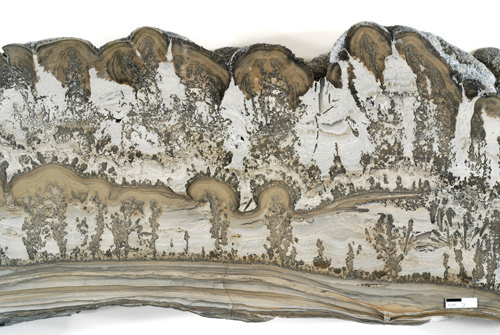University home > Centenary > Look > Cabinet of Curiosities > Cotham Marble
Cotham Marble
Department of Earth Sciences’ Geology Museum

This locally-occurring rock is a limestone, rather than a true marble. First described from the Rhaetian stage (Late Triassic) of the Cotham area of Bristol in 1754, its ‘landscape’ has been shown to have been produced by the growth of algae and worm-like organisms on ancient mud-flats. The algal mats bound the lime-rich sediment in layers (‘ploughed fields’), the surface of which developed polygonal ridges and tufts that became colonised by worm-like creatures. Algae and worms grew upwards together forming the dark ‘hedges’ and ‘trees’ and trapped mud in the hollows between them (‘sky’). This rock is known from a single horizon that outcrops in the West of England and South Wales, suggesting that the conditions that produced it – some 200 million years ago – were unique.
- Item reference: BRSUG 28900
- Photographer: Simon Powell
- Copyright: Department of Earth Sciences, University of Bristol
- This image is licensed for some educational use only. Users must abide by these terms and conditions.
